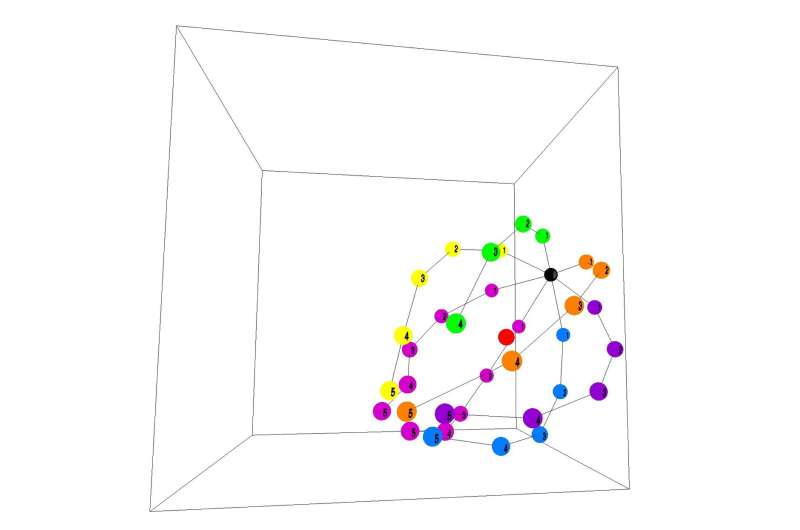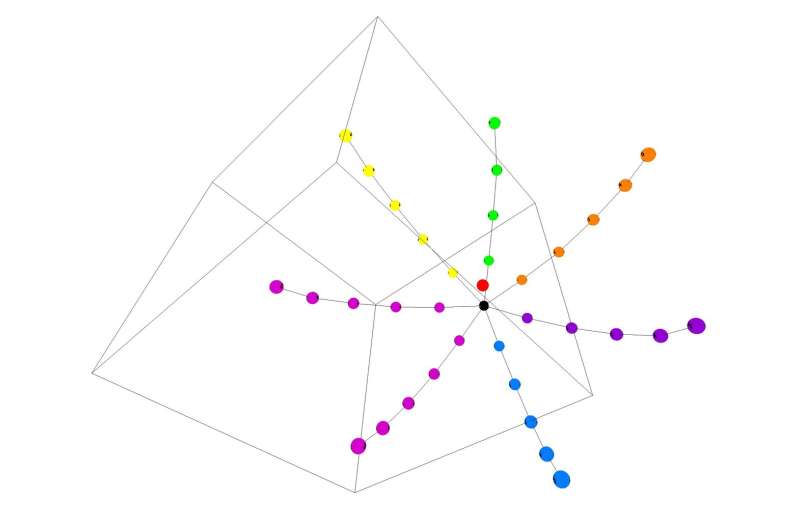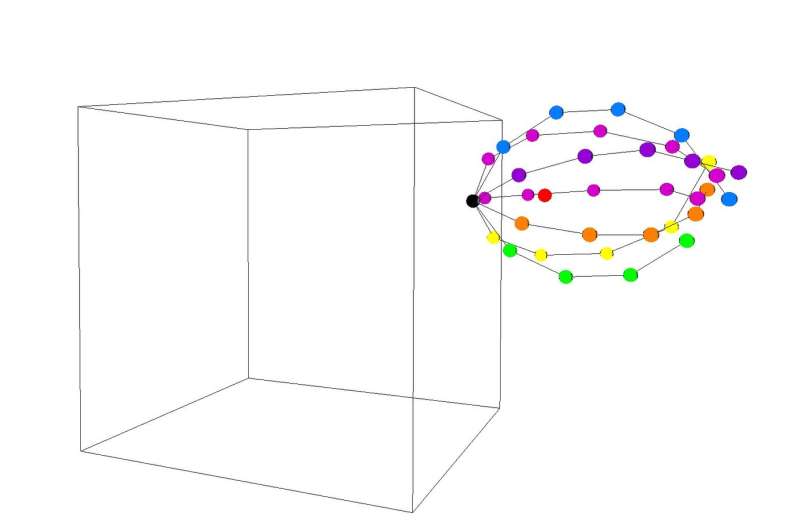August 31, 2018 feature
Networked UAV Defense Swarms to defend against malicious drones

A team of researchers at the University of Luxembourg have developed a new feasible and efficient defense system for unmanned aerial vehicles (UAV). Their system, outlined in a paper pre-published on arXiv, consists of a defense UAV swarm that can self-organize its defense formation when it detects an intruder, chasing the malicious UAV as a networked swarm.
Recently, a number of renowned companies, including Amazon, Alibaba and Domino's, have been testing the use of UAVs, commonly known as drones, to deliver parcels or food to people around the world. Several urban planners have now started considering drones in their designs for smart cities, for instance by incorporating so-called UAV flight zones and UAV highways.
However, the widespread adoption of drones poses a number of security risks. Their behavior dynamics and mobility should hence be adequately monitored, in order to detect and promptly respond to intruders, rogue drones, and malicious UAVs.
"Over the next years, thousands of drones will hit the skies to fulfill all kind of services such as food and package delivery, surveillance and maintenance," Matthias Brust, one of the researchers who carried out the study, told Tech Xplore. "Now, many cities are working on establishing designated drone flight zones. However, the deployment of a large number of drones comes with risks and security issues, in particular because of the speed, flexibility and autonomy of drones. Our research focuses on the question of how a drone defense system can act quickly and autonomously against rough or malicious drones entering the flight zone, and take appropriate counter-measures."

To address the security issues associated with UAVs, Brust and his colleagues developed a new defense system that can intercept and escort malicious or rogue drones outside of the flight zone. Their system is comprised of a swarm of UAVs that can organize its defense formation automatically when detecting an intruder, chasing it and neutralizing the threat.
"We developed a modular and local algorithm, which runs on each drone to enable it to make the right decision autonomously based on the state of its neighboring drones—forming a so-called 'intelligent swarm' of drones," Brust explained. "After initial deployment and detection of an intruder, the defense drones form a self-organized network and intercept the intruder by isolating it through a local encapsulation algorithm from its environment to escort it out of the flight zone."
The researchers developed a new auto-balanced clustering process, which ensures that the UAV swarm arranges itself in an effective formation to intercept and capture rogue drones. Once captured, the swarm can then safely escort the malicious vehicle outside of the flight zone.
"The most challenging task was to develop a local algorithm that doesn't require a system-wide consensus to function," Brust said. "Additionally, we needed to make sure that each drone is able to switch into the correct phase of the defense maneuvers in the right moment. We approached this problem with a modular design which creates balanced swarm-wide interception structures for the capture and escorting formation."

The researchers adopted a fully localized approach, using a modular design that consists of five phases: deployment, clustering, formation, chase, and escort. Tests using a prototype UAV simulator revealed that the system is feasible, resilient against communication losses, and performs consistently well.
"In contrast to centralized approaches, local approaches are in particular interesting for practical applications," Brust said. "The proposed approach is also highly-scalable, which makes it a very interesting candidate for a large variety of applications."
In future, the innovative defense system devised by Brust and his colleagues could help to improve the security of UAVs as they reach widespread adoption. Having successfully completed initial evaluations and simulations, the researchers are about to test their defense system in the real world.
"After the algorithmic development and the validation study, we are now in the process of deploying the drone defense system on real drones for field-tests," Brust said.
More information: Defending against Intrusion of Malicious UAVs with Networked UAV Defense Swarms. arXiv.1808.06900v1 [cs.NI]. arxiv.org/abs/1808.06900
Abstract
Nowadays, companies such as Amazon, Alibaba, and even pizza chains are pushing forward to use drones, also called UAVs (Unmanned Aerial Vehicles), for service provision, such as package and food delivery. As governments intend to use these immense economic benefits that UAVs have to offer, urban planners are moving forward to incorporate so-called UAV flight zones and UAV highways in their smart city designs. However, the high-speed mobility and behavior dynamics of UAVs need to be monitored to detect and, subsequently, to deal with intruders, rogue drones, and UAVs with a malicious intent. This paper proposes a UAV defense system for the purpose of intercepting and escorting a malicious UAV outside the flight zone. The proposed UAV defense system consists of a defense UAV swarm, which is capable to self-organize its defense formation in the event of intruder detection, and chase the malicious UAV as a networked swarm. Modular design principles have been used for our fully localized approach. We developed an innovative auto-balanced clustering process to realize the intercept- and capture-formation. As it turned out, the resulting networked defense UAV swarm is resilient against communication losses. Finally, a prototype UAV simulator has been implemented. Through extensive simulations, we show the feasibility and performance of our approach.
© 2018 Tech Xplore


















